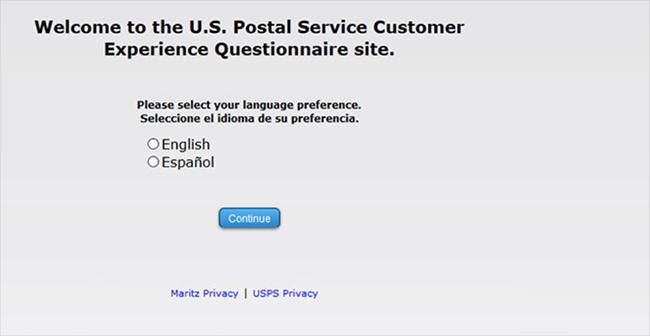PostalExperience Com POS Scan Code For Package Delivery Scanning
By Gavin | April 10, 2020
This article is about PostalExperience com POS scan code and the USPS is committed to providing customers with real-time visibility and control over their mail and parcel delivery services.

The goal of the postal service is to scan all barcoded messages (flats, letters, and parcels) that enter the mail flow and track them through additional scans to the delivery point. Scanning accuracy is critical to the success of real-time visibility.
PostalExperience Com POS Scan Code
The number of scanned packages in the postal service increased by 22% from 3.5 billion in 2015 to 4.3 billion in 2016. From July 1 to December 31, 2016, the postal service scanned more than 2 billion packages sent to more than 136 million delivery points on 227,000 lines across the country.
Postal service measures the performance of parcel delivery service from the receiving point to the first delivery attempt.
When a carrier attempts to deliver a package at the delivery point, it receives a commitment to stop clock scanning to indicate that the postal service has completed the delivery or attempted to deliver the package.
Operators scan and transmit parcel tracking data using hand-held mobile transmission devices (MDD). MDDs use the cellular network and global positioning system (GPS) technology to obtain real-time transmission tracking and positioning information.
If MDD is not available, operators can use the front-end intelligent mail device (IMD). However, IMD does not provide GPS data or real-time delivery tracking information.
Operators use MDD to perform stop clock scanning on packages at the actual delivery location so that customers can receive accurate package tracking notifications in real-time.
These stop clock scans performed at any location other than the designated delivery location (excluding caller service, leave waiting, post office box delivery, non-delivery by address, and business shutdown) are considered inappropriate.
Delivery unit management uses multiple product tracking and reporting system daily reports to manage the scan status and performance of its units, including start date, end date, and scan data integrity reports.
Our goal is to evaluate the package delivery scanning process in the city express business. This audit was initiated based on our data analysis.
Which shows that in fiscal 2017, the number of suspicious or improper delivery scans occurred in the delivery department is increasing, and about 1.4 million customer complaints are related to delivery.
How Is USPS OIG Funded
In the delivery operation, there is an opportunity to improve the package scanning process of postal service to minimize incorrect delivery scanning.
In the 2 billion scans from July 1 to December 31, 2016, we found that 25.5 million scans occurred between 7 P.M. and the next morning when the carrier clocked in and delivered the goods.
We further analyzed the 25.5 million scans using GPS positioning data and found that 15.3 million (60%) of them were performed at a location other than the delivery unit, so we did not consider it improper.
However, approximately 1.9 million scans (7%) are incorrect, stopping clock scans that occur at the delivery unit rather than at the delivery location.
Of the 25.5 million transmitted scans, another 8.3 million (33%) had no corresponding location data. Of the 8.3 million scans, operators used MDD for 2.3 million and IMD for 6 million.
Although IMDs do not provide GPS data, we estimate that most of the 2.3 million MDD scan lack location data due to GPS signal blocking. Therefore, it is impossible to determine whether the 8.3 million scans are correct or not.
These Scans Occurred Because
Delivery unit personnel did not always follow proper scanning procedures.
Employees sometimes experienced technical limitations with the MDDs, including delayed transmissions and signal obstruction.
Management's monitoring tools, scan data integrity reports, do not identify all incorrect scan events, such as those that may occur in the delivery unit.
Lastly, we identified 105 million scans, and 5% of the total number of scans in the period reviewed performed using.
This is because scanners and management have taken or are beginning to take corrective action to address these issues; therefore, we will not make recommendations in these areas.
Customers rely on accurate data to track their packages in real-time and receive notification of expected delivery windows.
By improving the scanning operation, postal service can improve delivery performance, reduce customer delivery complaints, and achieve the goal of providing real-time mail visibility for customers.
What the OIG Recommended
Continue to stress the importance of adherence to package scanning guidelines and policies.
Develop a process that allows operators to scan multiple packages to a delivery address to provide customers with accurate delivery information.
Review academy and University delivery partner programs and USPS partner mobile app pilot results and consider implementing any best practices for delivery points.
Develop an MDD warning message/alert to deter scans at delivery units.
Create a reason code for manual entry of stop-the-clock scans.
Update the scan data integrity report to track incorrect scans performed at the transfer unit.
How To Track A USPS Package
To track your USPS package, all you need is the package tracking number, which can be found on your USPS shipping label or within the USPS official website.
Navigate to the USPS official website.
Enter the USPS tracking number (to find it, simply look at the bottom of a shipping label) in the search bar, do not include any dashes or spaces.
Click on 'Check Status'.
View the scan history and status information of your package.
You can also view this information by entering the tracking number in the search bar near the upper right corner on www.usps.com.